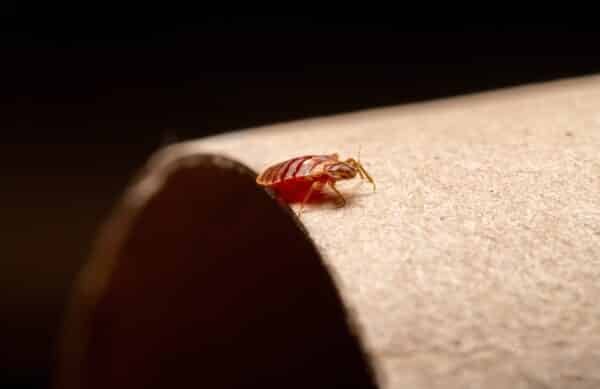Same-day hornet and yellow jacket service available
What do yellow jackets look like?
As the name would suggest, yellow jackets are yellow and black in color, although some are black and white. These small wasps measure about 10 to 16 mm in length, with a thin, defined waist and elongated wings that span the length of the body and fold laterally when resting. They are often mistaken for bees.
What does a yellow jackets’ nest look like?
Yellow jackets typically nest in the ground and create their colonies below porches or steps, at the base of trees, in sidewalk cracks, or around railroad ties. Yellow jackets are not known to nest inside of homes. They have also been known to nest aerially in the wall void of buildings, in bushes, in low-hanging branches, or in the corners of homes and buildings.
What is common yellow jacket behavior?
Yellow jackets are social wasps. They live in underground colonies that may grow to thousands of insects at a time. Their diet consists of beetle grubs, flies, and other harmful pests, which is beneficial to the ecosystem, but they are also known as scavengers that enjoy meat, fish, and sugars and are a nuisance when found around trash cans.
Do yellow jackets sting? Do yellow jackets bite?
Yellow jackets are aggressive protectors of their colonies; otherwise, these wasps are not known to sting. However, when threatened, yellow jackets are capable of stinging repeatedly and their sting is known to be painful. The yellow jacket is also known to bite.
What are signs of a yellow jacket problem?
The best indication of a yellow jacket problem is actually seeing the workers themselves. You may also be able to see the nest, especially when it is an aerial nest.
How do I get rid of yellow jackets?
Yellow jackets are pollinators that eat many harmful insects, so you do not need to take any action unless there is a stinging risk for people or pets. To prevent yellow jackets from nesting, it is beneficial to keep all trash cans closed and clean so that yellow jackets cannot scavenge for food inside or outside of the can. You can also purchase specialized yellow jacket traps; however, due to the fact that there can be thousands of these pests inside of a single colony, that may be ineffective for larger infestations. It is recommended that you call a pest control professional to solve this problem.
The first step in exterminating yellow jackets is to locate the nest, which is fairly simple when it is an aerial nest but a little more difficult when the nest is located underground. After the yellow jacket nest is located, the problem can be solved in a variety of ways. For aerial nests built in a structure such as a building void, it is imperative that the entrance is not sealed until all of the yellow jackets are dead. Typically, this extermination is done at night when most of the yellow jackets are inside of the nest. The pest control professional will spray a dust or an aerosol product in and around the nest to kill the wasps. Once these wasps are dead, it is safe to remove the nest. It is imperative to not close the entrance of the nests built in building voids because the yellow jackets will try to escape the nest by getting into the building, causing a stinging hazard for everybody inside of the structure.





